Hyun-Seo Ahn
CycleQSM: Unsupervised QSM Deep Learning using Physics-Informed CycleGAN
Dec 07, 2020
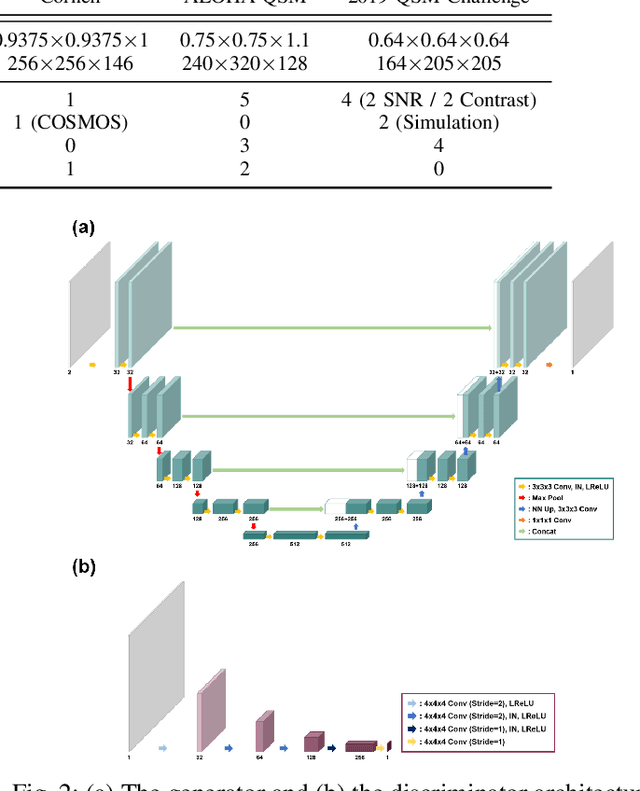
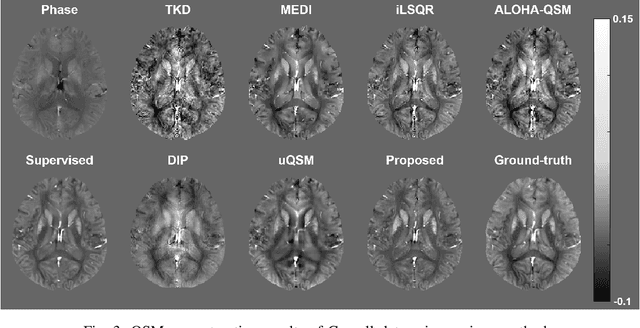
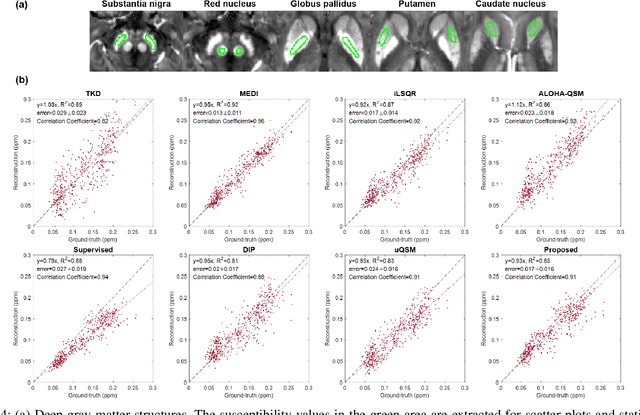
Abstract:Quantitative susceptibility mapping (QSM) is a useful magnetic resonance imaging (MRI) technique which provides spatial distribution of magnetic susceptibility values of tissues. QSMs can be obtained by deconvolving the dipole kernel from phase images, but the spectral nulls in the dipole kernel make the inversion ill-posed. In recent times, deep learning approaches have shown a comparable QSM reconstruction performance as the classic approaches, despite the fast reconstruction time. Most of the existing deep learning methods are, however, based on supervised learning, so matched pairs of input phase images and the ground-truth maps are needed. Moreover, it was reported that the supervised learning often leads to underestimated QSM values. To address this, here we propose a novel unsupervised QSM deep learning method using physics-informed cycleGAN, which is derived from optimal transport perspective. In contrast to the conventional cycleGAN, our novel cycleGAN has only one generator and one discriminator thanks to the known dipole kernel. Experimental results confirm that the proposed method provides more accurate QSM maps compared to the existing deep learning approaches, and provide competitive performance to the best classical approaches despite the ultra-fast reconstruction.
Quantitative Susceptibility Map Reconstruction Using Annihilating Filter-based Low-Rank Hankel Matrix Approach
Apr 25, 2018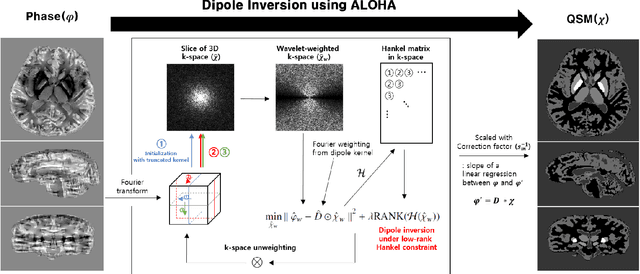
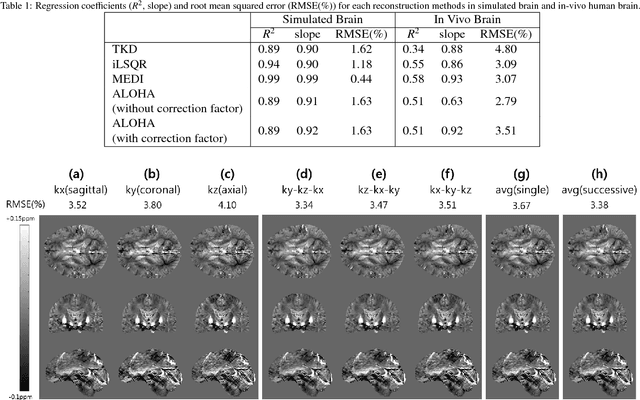


Abstract:Quantitative susceptibility mapping (QSM) inevitably suffers from streaking artifacts caused by zeros on the conical surface of the dipole kernel in k-space. This work proposes a novel and accurate QSM reconstruction method based on a direct k-space interpolation approach, avoiding problems of over smoothing and streaking artifacts. Inspired by the recent theory of annihilating filter-based low-rank Hankel matrix approach (ALOHA), QSM reconstruction problem is formulated as deconvolution problem under low-rank Hankel matrix constraint in the k-space. To reduce the computational complexity and the memory requirement, the problem is formulated as successive reconstruction of 2-D planes along three independent axes of the 3-D phase image in Fourier domain. Extensive experiments were performed to verify and compare the proposed method with existing QSM reconstruction methods. The proposed ALOHA-QSM effectively reduced streaking artifacts and accurately estimated susceptibility values in deep gray matter structures, compared to the existing QSM methods. Our suggested ALOHA-QSM algorithm successfully solves the three-dimensional QSM dipole inversion problem without additional anatomical information or prior assumption and provides good image quality and quantitative accuracy.
 Add to Chrome
Add to Chrome Add to Firefox
Add to Firefox Add to Edge
Add to Edge